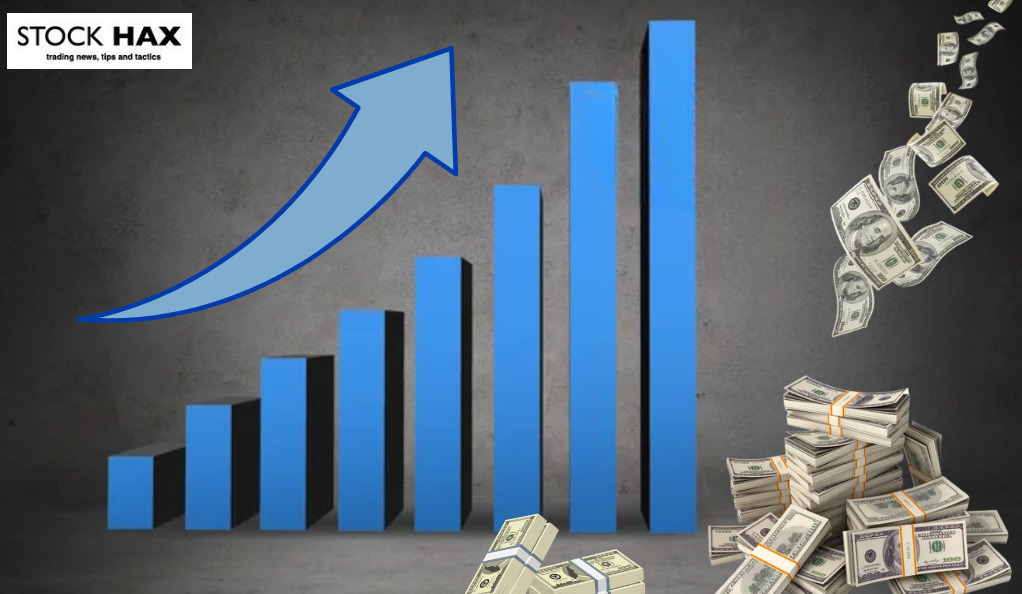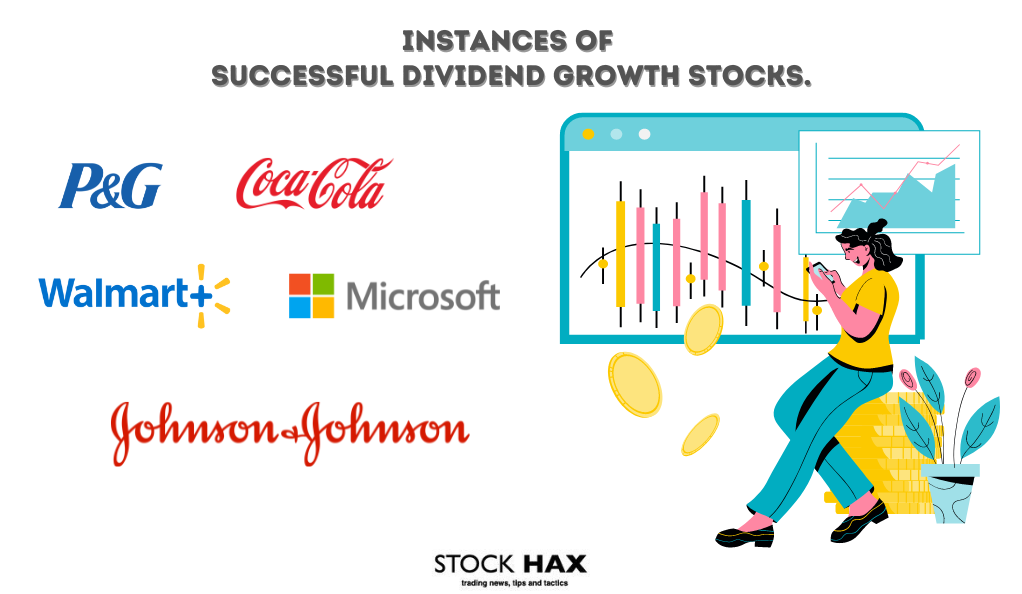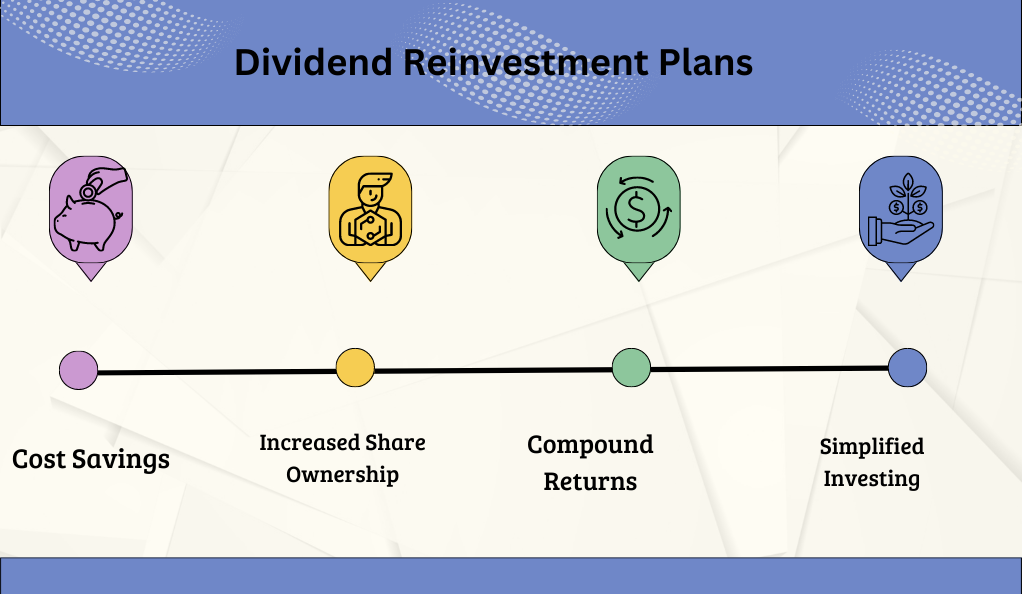This website and its content are not intended to provide professional or financial advice. The views expressed here are based solely on the writer’s opinion, research, and personal experience, and should not be taken as factual information. The author is not a financial advisor and lacks relevant certifications in that regard. We highly recommend consulting a qualified financial advisor before making any investment decisions, as the information presented on this site is general in nature and may not be tailored to individual needs or circumstances.

In the fast-paced world of stock trading, where fortunes are made and lost in the blink of an eye, one element stands as a beacon of stability and consistent returns: the dividends.
While stock prices may fluctuate wildly, dividends offer investors a steady stream of income that can enhance their overall returns on invested capital. Understanding the role of dividends in stock trading is crucial for anyone seeking to build a stable and profitable investment portfolio.
Here’s a breakdown:
- Role of Dividends:
- Dividends offer investors a steady stream of income that enhances overall returns on invested capital.
- Definition of Dividends:
- Dividends are cash payments made by companies to their shareholders as a distribution of profits.
- These payments are typically made regularly, often quarterly, based on earnings and the board of directors’ decisions.
- Significance of Dividends:
- Dividends are a way for companies to reward shareholders and share a portion of their success.
- They are recognized as a source of income and a measure of a company’s financial health.
- Dividend-paying stocks have been favored by income-focused investors due to the reliable cash flow they provide.
The main purpose of this article is to delve into the role of dividends in stock trading, exploring their advantages and drawbacks, their impact on stock prices, and the factors investors should consider when incorporating dividend-paying stocks into their trading strategies.
By understanding the dynamics of dividends, investors can potentially make better decisions and thus benefit from the consistent cash inflow in the volatile universe of stock investing.
The Importance of Dividends for Income Investors
For income-focused investors, dividends hold significant importance as they provide a reliable and consistent stream of cash flow. Consider the following:
- Regularity of Payments:
- Dividend-paying stocks, especially from established companies, offer a steady stream of money inflow.
- Regular dividend payments allow income investors to meet financial obligations and cover living expenses.
- Stability and Security:
- Companies that consistently pay dividends are often financially sound and generate sufficient profits.
- Dividends provide stability and security, appealing to income investors seeking to minimize risk and preserve capital.
Below are examples of Income-focused Investors:
| Investor Profile | Description |
| Retiree | Relies on investment portfolio to cover living expenses. Dividend payments supplement retirement income, providing a steady and predictable cash flow. |
| Income-focused Investor | Prioritizes generating passive income. Builds a diversified portfolio of dividend-paying stocks to create a consistent cash flow. Uses dividends to reinvest or support financial goals, such as funding future expenses or desired lifestyle. |
The listings highlight the advantages of dividends for income-focused investors, emphasizing the regularity of payments and the stability they offer. The table provides specific examples of income-focused investors, showcasing their reliance on dividend payments for cash flow.
Dividend Growth Investing
Dividend growth investing is a strategy that focuses on investing in companies that have a track record of increasing their dividend payments over time.
This approach emphasizes both the current dividend yield and the potential for future dividend growth. Dividend growth stocks are often sought after by income investors looking for a combination of reliable income and potential capital appreciation.
Advantages of Dividend Growth Investing
- Power of Compounding Returns:
- Investing in companies with consistent dividend increases allows for compounding returns over time.
- Reinvesting dividends can lead to a more significant ownership stake and higher future dividend payments.
- Established Companies with Stable Earnings:
- Dividend growth stocks are typically found among established companies.
- These companies demonstrate stable earnings and a commitment to returning profits to shareholders.
- Thorough Research and Analysis:
- Dividend growth investing requires conducting in-depth research and analysis.
- Identifying companies with the potential to sustain and increase their dividend payments is crucial.
Dividend growth stocks are typically found among established companies with stable earnings and a history of consistent dividend increases. These companies often operate in mature industries and demonstrate a commitment to returning profits to shareholders.
Dividend growth investing relies on thorough research and analysis to identify companies with the potential to sustain and grow their dividend payments.
Examples of Successful Dividend Growth Stocks

- Johnson & Johnson
- Coca-Cola
- Microsoft Corporation
- Walmart
- Procter & Gamble
These companies have demonstrated a commitment to increasing their dividends year after year, providing investors with a reliable income stream and the potential for capital appreciation.
By focusing on dividend growth, income investors can potentially achieve a rising stream of income that keeps pace with inflation and enhances their overall returns.
Dividend growth investing combines the benefits of regular income with the potential for long-term capital appreciation, making it an attractive strategy for those seeking both income and growth in their investment portfolios.
Dividends as a Measure of Company Health
Dividends can be a valuable indicator of a company’s financial health and overall performance. By analyzing a company’s dividend history, investors can gain insights into its profitability, stability, and management’s confidence in its prospects.
Importance of Dividends in Evaluating Company Health
- Reflects Earnings and Cash Flow:
- Dividends provide insights into a company’s profitability and its ability to generate profits.
- Consistent dividend payments indicate that a company has sufficient earnings and cash flow to distribute to shareholders.
- Demonstrates Financial Stability and Business Model:
- A company that consistently pays dividends showcases financial stability and a strong business model.
- A history of growing dividends indicates the company’s ability to generate increasing profits over time.
- Dividend Sustainability:
- Dividend sustainability is crucial for evaluating a company’s long-term health.
- Sustainable and predictable earnings are necessary for a company to continue paying dividends.
- Dividend Coverage Ratio:
- The dividend coverage ratio compares a company’s earnings to its dividend payments.
- Assessing this ratio helps determine if a company can sustain its dividend obligations without compromising its financial stability.
Moreover, dividend policies can reveal important information about a company’s management and growth strategy. Companies that prioritize dividend payments often have a disciplined approach to capital allocation and a focus on shareholder value.
However, companies that allocate a significant portion of their earnings to dividends may have limited funds available for reinvestment in growth initiatives.
Example:
| Comparison Between | Company X | Company Y |
| Dividend History | Consistently increased dividends over the past decade | History of inconsistent dividend payments or declining coverage ratio |
| Dividend Coverage Ratio | Maintains a strong coverage ratio indicating stable and growing earnings | Declining coverage ratio due to inconsistent dividend payments |
Dividend Reinvestment Plans (DRIPs) and Compounding Returns
Dividend Reinvestment Plans offer investors a unique opportunity to harness the power of compounding returns. With DRIPs, instead of receiving cash dividends, investors have the option to automatically reinvest those dividends back into the company by purchasing additional shares.

Advantages of Dividend Reinvestment Plans (DRIPs):
- Cost Savings:
- Acquiring additional shares through DRIPs avoids incurring transaction costs, such as brokerage fees or commissions.
- Investors can benefit from cost savings by acquiring more shares directly from the company at no additional cost.
- Increased Share Ownership:
- Reinvesting dividends through DRIPs enables investors to acquire more shares over time.
- This increases their ownership stake in the company without incurring additional expenses.
- Compound Returns:
- DRIPs harness the power of compounding returns.
- Reinvested dividends can purchase more shares, leading to potential growth in investment returns over the long term.
- Simplified Investing:
- DRIPs offer a convenient and automated way to reinvest dividends.
- Investors can avoid the hassle of manually purchasing shares and instead let the plan handle the reinvestment process.
The power of compounding returns comes into play when the reinvested dividends generate their own dividends. Over time, these accumulated dividends can purchase even more shares, leading to an exponential growth effect.
As the number of shares increases, the subsequent dividends received also grow, creating a compounding cycle that can significantly enhance investment returns in the long term.
Example:
- To illustrate the potential of compounding returns through DRIPs, consider an investor who purchases 100 shares of a company’s stock at an initial price.
- If the company pays regular dividends and the investor reinvests those dividends through a DRIP, they would acquire additional shares with each dividend payment.
- Over the years, the increasing number of shares would result in higher dividend payments, which would, in turn, be reinvested to acquire even more shares.
The Power of Compounding Returns
| Stage | Accumulated Dividends | Shares Purchased | Subsequent Dividends |
| Year 1 | $500 | 10 | $25 |
| Year 2 | $750 | 15 | $37.50 |
| Year 3 | $1,125 | 20 | $56.25 |
| Year 4 | $1,688 | 25 | $84.38 |
| Year 5 | $2,532 | 30 | $126.60 |
Dividend Reinvestment Plans provide investors with an avenue to harness the power of compounding returns. By reinvesting dividends back into the company, investors can acquire additional shares and benefit from the compounding effect of increasing dividends over time.
DRIPs can be a valuable tool for long-term investors looking to maximize their investment returns and build wealth through dividend-focused strategies.
Dividend taxation and strategies for maximizing after-tax returns
When it comes to dividend taxation, the specific rules and rates can vary depending on the jurisdiction and the type of dividend. In many countries, dividends are subject to taxation as ordinary income, meaning they are taxed at the individual’s applicable income tax rate. However, some jurisdictions offer preferential tax rates for qualified dividends, which are dividends paid by domestic corporations that meet specific criteria.
Strategies to Maximize After-Tax Returns on Dividends:
- Utilize Tax-Advantaged Accounts:
- Take advantage of accounts like Individual Retirement Accounts (IRAs) or Roth IRAs.
- These accounts offer tax advantages, such as tax-deferred or tax-free growth, reducing the tax impact on dividend income.
- Tax-Efficient Portfolio Allocation:
- Strategically allocate dividend-paying stocks across taxable and tax-advantaged accounts.
- Hold higher-income generating stocks in tax-advantaged accounts and lower dividend-yielding stocks in taxable accounts to minimize the overall tax burden.
- Consider Dividend-Focused ETFs or Mutual Funds:
- Invest in dividend-focused exchange-traded funds (ETFs) or mutual funds.
- These funds employ tax-efficient investing techniques to minimize taxable distributions while still providing income from the underlying dividend-paying stocks.
Finally, investors need to stay informed about changes in tax laws and regulations. Tax laws can undergo revisions, and staying up to date with these changes can help investors adjust their strategies accordingly and maximize after-tax returns.
In summary, understanding dividend taxation and implementing strategies to maximize after-tax returns is vital for investors. Seeking advice from tax professionals or financial advisors can provide further guidance on tailoring these strategies to individual circumstances and investment goals.
Conclusion
This article has addressed the role of dividends in stock investing, highlighting their significance for income investors, the potential of growth in dividend growth investing, their use as a measure of company health, as well as the strategies to maximize after-tax returns.
Dividends offer a stable stream of income, provide insights into a company’s financial health, and can be a valuable component of a well-rounded investment portfolio.
The dividend growth investing strategy focuses on companies with a history of increasing dividends while considering dividend sustainability and management’s confidence in future prospects. Understanding tax implications and implementing tax-efficient strategies are essential for maximizing after-tax returns.
By comprehending the importance of dividends and navigating their various aspects, investors can make more balanced decisions and potentially enhance their investment outcomes in the dynamic universe of stock investing.
FAQ
The taxation rates for dividends can vary depending on the jurisdiction and the type of dividends.
Yes, both company stocks and various funds may distribute dividends to their shareholders.
External factors such as macroeconomic conditions, industry trends, regulatory changes, market volatility, and other factors may influence any company’s decision to pay dividends.
StockHax strives to provide unbiased and reliable information on cryptocurrency, finance, trading, and stocks. However, we cannot provide financial advice and urge users to do their own research and due diligence.
Read More